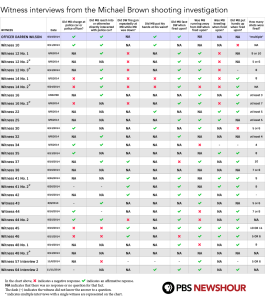Protests and Riots, Same as it Ever Was
In the week since a Missouri grand jury returned no indictment against Darren Wilson, the killer of Michael Brown, a lot of whitesplaining has taken place, mostly from non-lawyers who deliberately or ignorantly misapprehend what a grand jury is and how it works. That’s before we get to Darren Wilson’s unvetted story.
Here are three facts: there was no trial, there was no verdict, and Darren Wilson was not found innocent, much less “not guilty”.
In that time, there have been protests both peaceful and violent, and I’ve seen many commentators dismiss the rioters as “animals” and “thugs”, or worse.
Rioting, however, doesn’t happen in a vacuum.
From the Buffalonian, via Reddit, here is a summary explaining why African-Americans on Buffalo’s East Side rioted in the summer of 1967.
A preliminary report
Looking at and considering the reasons why people riot isn’t the same as excusing it or condoning it. But if we want to stop violence like that from happening again, perhaps we – as a society – could consider what’s working, what isn’t, and why the problems identified in 1967 persist so pervasively to this day.
The Ferguson riots didn’t happen in a vacuum. It doesn’t matter anyway, because even when African-Americans have the audacity to protest peacefully – whether in Buffalo, Los Angeles, or St. Louis – there will be white people around to remind them that they’re being uppity, and that it’s not at all their place.
Which is it? That they should protest peacefully, or that they should STFU and not protest at all because a “jury” reached a “verdict” that Wilson was “not guilty”?
People in Ferguson were angry there won’t be a trial. Courtesy of PBS Newshour, here is why there should have been a trial. Not a guilty verdict – just a trial.
Maybe that’s why people in Ferguson reacted violently – years’ worth of frustration, sparked by apparent and perceived injustice.





